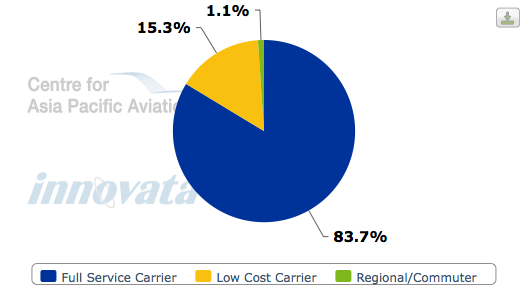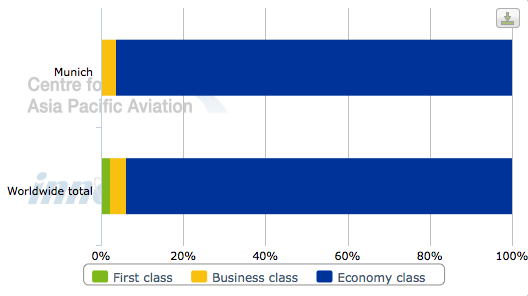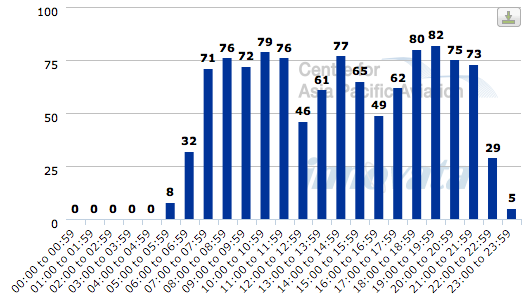Munich versus Frankfurt airport: Smaller southern rival throws down the gauntlet
Munich Airport is setting a cracking pace in terms of traffic in 2011, topping the 8 million mark for the first three months of a calendar year for the first time. Traffic is up 12% year-on-year. Munich, which reports its monthly traffic before its bigger rival, has just completed its busiest March ever, handling nearly 3 million passengers. Munich is also crowing about its gains in the trans-continental segment; traditionally Frankfurt's stronghold.
Increases in passenger traffic in Munich's long-haul and European traffic segments were higher than the overall average gains, with the number of long-haul passengers up by 13.2% in the quarter, according to FMG, the airport operator. Munich Airport noted, "In the booming intercontinental segment, North and South American routes are particularly popular at present, with more than 100 departures per week in the first quarter. Nearly 540,000 passengers crossed the Atlantic to travel to and from Munich. This represents a 19% increase over the previous year. Services offered to Asian destinations continued their strong performance, with an overall 10% traffic increase in Munich".
Sharp increases were also seen in total aircraft movements in the Bavarian city. At just under 97,000 flights, the number of take-offs and landings in Munich in the first quarter was approximately 10% higher than in 2010. Munich Airport handled almost 70,000 tonnes of airfreight and airmail in the first three months of the year - an increase of 21% year-on-year.
A review of schedules at Munich and Frankfurt by CAPA (utilising data available for all website users on its Airport Profiles), reveals some striking similarities - and a few differences - between the two gateways.
Unsurprisingly, Lufthansa dominates both airports and the Top 3 carrier spots are held by German airlines (with Germanwings in Munich's Top 3 and Condor in Frankfurt's). The main difference is the scale. Lufthansa's operations at Frankfurt are roughly 50% bigger than Munich, in terms of seats per week.
Meanwhile, all nine leading carriers at Munich are European, whereas three non-European carriers make it onto Frankfurt's lead group (namely United Airlines, Air Canada and Singapore Airlines - all from the Star Alliance). Munich will be working hard to grow a non-European carrier into its portfolio of major airlines.
Capacity (seats per week, to/from) by carrier (11-Apr-2011 to 17-Apr-2011)
| Munich | Frankfurt |
|---|---|
|
|
 Frankfurt%20airlines.png" alt="" height="201" /> Frankfurt%20airlines.png" alt="" height="201" /> |
Munich has a greater proportion of LCCs, accounting for 15.3% of total weekly seats, against Frankfurt's 3.1%. easyJet is Munich's fifth biggest airline, just behind British Airways. Munich's LCC exposure is helping to drive stronger growth in short-haul markets.
Capacity share by carrier type (11-Apr-2011 to 17-Apr-2011)
| Munich | Frankfurt |
|---|---|
|
|
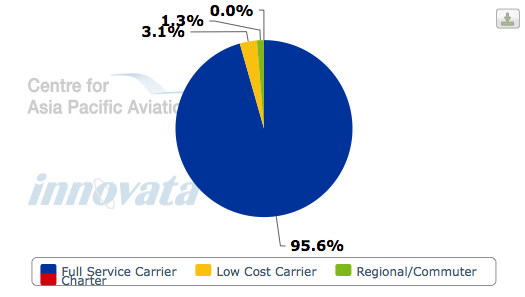 |
Some 72% of Munich's weekly capacity is on international routes, compared to over 85% at Frankfurt.
International vs domestic capacity share (11-Apr-2011 to 17-Apr-2011)
| Munich | Frankfurt |
|---|---|
|
|
 Frankfurt%20intl-dom.png" alt="" height="201" /> Frankfurt%20intl-dom.png" alt="" height="201" /> |
The international network profiles for both airports is surprisingly similar. After Western Europe, Eastern/Central Europe is Munich's second largest route region, whereas North America is Frankfurt's second biggest. They reverse for third place.
Middle East is the fourth largest region for both, followed by Northeast and Southeast Asia.
International capacity by region (11-Apr-2011 to 17-Apr-2011)
| Munich | Frankfurt |
|---|---|
|
|
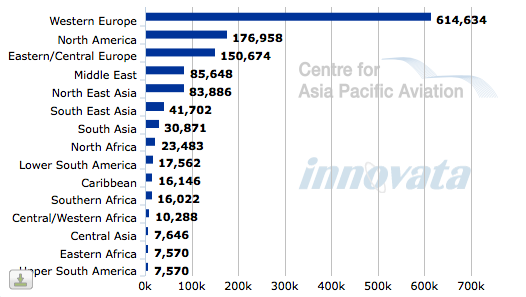
|
The Star Alliance, anchored in Germany by Lufthansa, has a dominant share of both airports, though it has better penetration at Frankfurt (79%) than Munich (72%). Unaligned carriers account for over one in five seats per week at Munich.
Capacity share by alliance (11-Apr-2011 to 17-Apr-2011)
| Munich | Frankfurt |
|---|---|
|
|
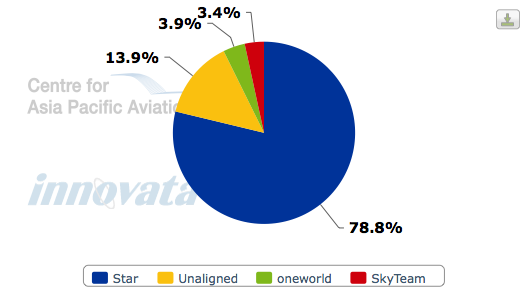 |
Munich trails Frankfurt - and the worldwide average - in terms of premium capacity, with some 3.5% of total weekly seats at Munich in Business Class. At Frankfurt, this proportion is 7.1% (against the worldwide average of 3.9%).
Schedule by class of seat - one way weekly departing seats (11-Apr-2011 to 17-Apr-2011)
| Munich | Frankfurt |
|---|---|
|
|
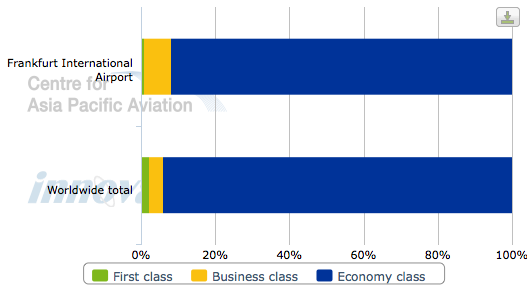 |
Munich and Frankfurt have similar peaks in terms of hourly movements, though Frankfurt is more consistently busy between 07:00 and 22:00 than its southern rival.
Movements per hour for 11-Apr-2011
| Munich | Frankfurt |
|---|---|
|
|
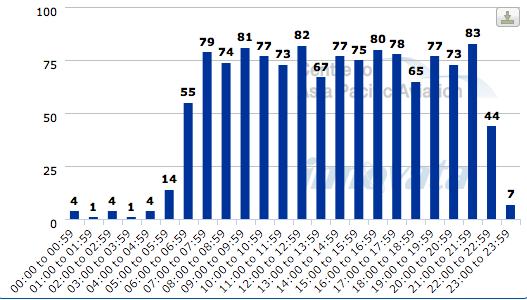 |
Fares, on the Dubai route at least, have also been similar, with a 30-day moving average of fares to both airports from the UAE hub at just under USD1,050 for travel in mid-May. Fares peaked in early Mar-2011 at around USD1,500 for Munich and USD1,900 for Frankfurt.
Return economy fares from Dubai
| Munich | Frankfurt |
|---|---|
|
|
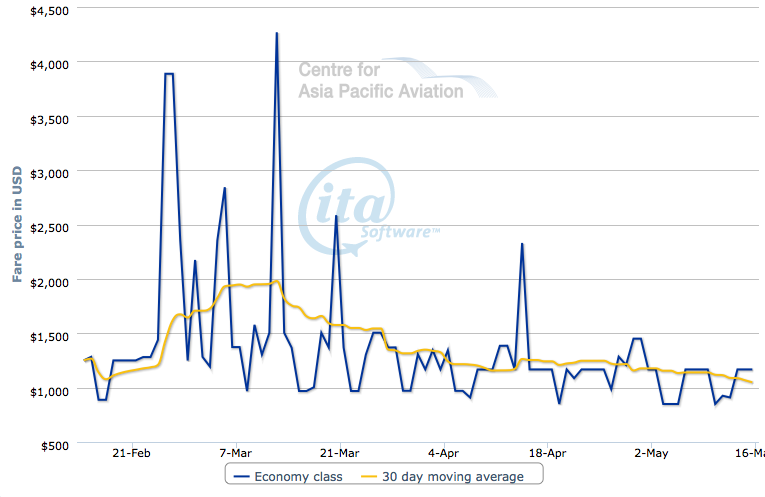 |
NB: All these graphics and data are available on the Munich and Frankfurt profile pages - and 2,500 airport profiles just like them - to facilitate comparison and analysis.
Outlook 2011
Munich Airport was back on the growth path in 2010 handling a record 35 million passengers - a gain of 6% year-on-year - and helping it hold onto seventh spot among Europe's top airports in terms of total passengers. Frankfurt Airport meanwhile registered a 4.1% increase in passenger numbers to 53 million last year. The early evidence for 2011 suggests Munich could make further inroads into Frankfurt's lead this year. That would give FMG even more to crow about.
